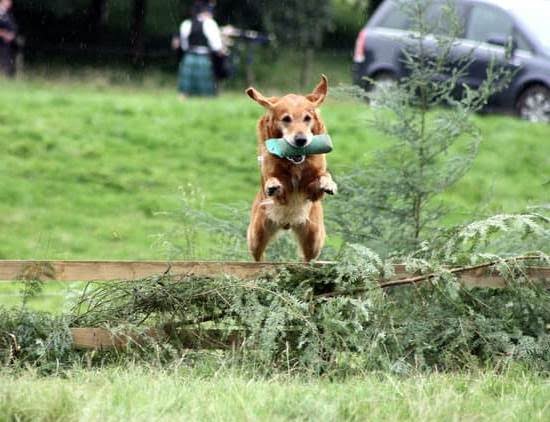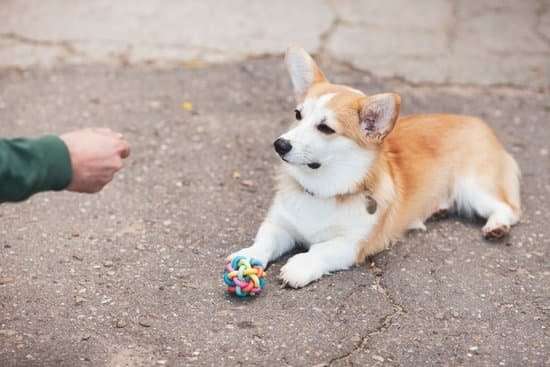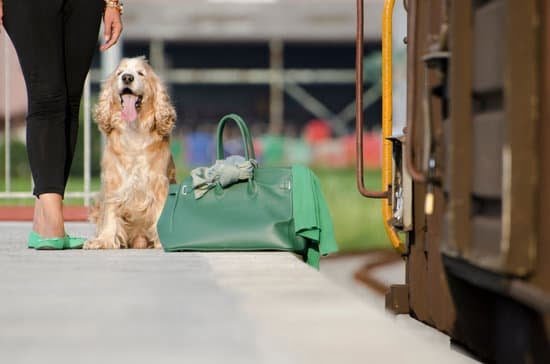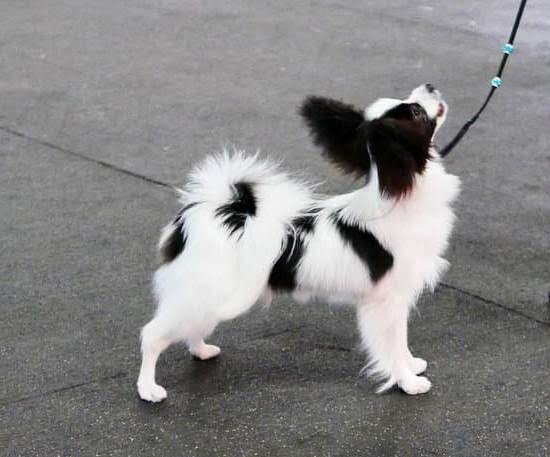Are you looking to deepen the bond with your furry friend? In this article, we will explore how to train your dog to be affectionate, building a strong foundation for a loving and trusting relationship.
Understanding the importance of affection in dog training is crucial, as it not only fosters emotional and psychological benefits for your canine companion but also strengthens the bond between you and your pet. By incorporating socialization, positive reinforcement, and creating a safe environment, you can nurture empathy, understanding, and lasting affectionate behavior in your dog.
When it comes to fostering affectionate behavior in dogs, it’s essential to understand the emotional and psychological benefits it brings to both pets and their owners. Affectionate training not only helps dogs feel secure and loved but also enhances their overall well-being. Through intentional training methods, you can build a strong bond based on trust and love.
Socialization plays a vital role in shaping your dog’s disposition towards affection. It allows them to feel comfortable around new people, other animals, and various environments. Additionally, utilizing positive reinforcement techniques such as treats, toys, or verbal praise can encourage and strengthen affectionate behavior in dogs. These foundational steps contribute significantly to creating a loving and trusting relationship with your pet.
Building a Strong Foundation
When it comes to training your dog to be affectionate, building a strong foundation through socialization and positive reinforcement is crucial. Socialization plays a significant role in fostering an affectionate disposition in your dog. Introducing your furry friend to different people, animals, and environments from an early age can help them feel more comfortable and secure, leading to a more affectionate behavior.
Utilizing positive reinforcement techniques is another key aspect of building a strong foundation for affectionate training. This means rewarding your dog with treats, praise, or playtime when they display the desired affectionate behavior. By associating this behavior with positive experiences, your dog will be more likely to continue exhibiting affectionate actions.
To achieve these goals effectively, consider the following steps as part of the foundation-building process:
- Take your dog to various places such as parks, pet-friendly stores, or outdoor events to expose them to new experiences and ensure they are comfortable in different environments.
- Arrange play dates with other dogs or introduce them to friendly neighborhood pets under controlled circumstances.
- Use treats, toys, and verbal praise to reinforce their affectionate behavior whenever they exhibit it towards you or other animals.
- Be patient and consistent in your approach so that your furry friend can learn and develop at their own pace.
By focusing on socialization and positive reinforcement, you can lay the groundwork for a strong and lasting bond built on love and affection between you and your canine companion.
Communicating Love and Affection
Understanding how dogs interpret human body language and vocal cues is crucial in training them to be affectionate. Dogs rely heavily on non-verbal communication, so mastering your body language and vocal tone is vital in fostering a loving connection with your furry friend.
Body Language
Dogs are incredibly perceptive to human body language. They can pick up on subtle cues such as facial expressions, posture, and gestures, which can convey love, comfort, and security. When interacting with your dog, make sure to maintain open and relaxed body language. Avoid making sudden movements or displaying signs of tension or anxiety, as this can cause your dog to feel uneasy or threatened. Instead, use gentle pats, soothing strokes, and relaxed eye contact to communicate love and affection.
Verbal Cues
In addition to body language, the tone of your voice plays a significant role in how dogs perceive affection. Using a soft and soothing tone when speaking to your dog can convey warmth and tenderness. Dogs respond well to positive affirmations such as “good boy” or “good girl,” as it reinforces their understanding of affectionate behavior. Consistency in the use of verbal cues is key in helping your dog recognize love and praise.
By being mindful of both your body language and verbal cues, you can create an environment that resonates with your dog’s emotional needs. This form of communication will not only aid in training your dog to be affectionate but also strengthen the bond between you both.
Creating a Safe and Secure Environment for Your Dog
When it comes to training your dog to be affectionate, creating a safe and secure environment is essential. Dogs thrive in environments where they feel safe, comfortable, and free from stress. By providing a secure space for your furry friend, you can facilitate the development of affectionate behavior and strengthen your bond with them.
The importance of a secure and stress-free environment cannot be overstated when it comes to fostering affectionate behavior in dogs. Just like humans, dogs need a place where they feel at ease and protected. This can include establishing a designated area for your dog to rest, ensuring that the space is peaceful and free from disturbances, and offering plenty of opportunities for relaxation.
Practical steps for creating a safe and comfortable environment for your dog may include providing them with a cozy bed or crate, setting up barriers to prevent access to potential hazards or stressful situations, and maintaining a consistent routine that promotes feelings of security. Additionally, ensuring that your dog has access to fresh water, nutritious food, regular exercise, and mental stimulation will contribute to their overall well-being and sense of security.
By taking these measures, you can lay the foundation for a harmonious and affectionate relationship with your canine companion.
Nurturing Emotional Intelligence
Cultivating empathy and understanding in your own interactions with your dog is essential in fostering a strong bond and encouraging affectionate behavior. Dogs are highly attuned to human emotions and can pick up on cues that indicate how we are feeling. Demonstrating empathy towards your dog, acknowledging their emotions, and responding appropriately can significantly impact their own ability to recognize and respond to emotions.
Positive reinforcement is an effective method for nurturing emotional intelligence in dogs. When your dog exhibits affectionate behavior or responds positively to emotional cues, it is important to reward them with praise, treats, or physical affection. This strengthens the association between their actions and positive outcomes, reinforcing their understanding of emotional cues.
In addition to using positive reinforcement, consistency is key in nurturing emotional intelligence in your dog. By consistently responding to their emotions with empathy and understanding, you are helping them recognize patterns and develop their own ability to empathize with you. Over time, this can lead to more affectionate behavior as your dog becomes more attuned to your emotions and the way you interact with them.
| Emotional Intelligence | Educational Tools |
|---|---|
| Acknowledging Emotions | Interactive Toys |
| Positive Reinforcement | Training Treats |
| Consistent Responses | Praise and Affection |
Incorporating Play and Exercise Into Your Affectionate Training
Building a strong bond with your dog involves more than just basic training. Incorporating play and exercise into your affectionate training can have a significant impact on your relationship with your furry friend. Physical activity not only keeps your dog healthy and happy, but it also strengthens the emotional connection between you and your pet.
Regular exercise is essential for maintaining a well-balanced and content dog. Just like humans, dogs need physical stimulation to stay fit and healthy. Engaging in interactive activities such as fetch, tug-of-war, or agility training can help release excess energy and reduce behavioral issues. Additionally, incorporating daily walks into your routine provides mental stimulation for your dog by allowing them to experience new sights, sounds, and smells.
Playtime is not just about physical activity; it also creates opportunities for bonding with your dog. Whether it’s a game of catch in the backyard or hide-and-seek indoors, engaging in play helps to build trust and strengthen the emotional connection between you and your pet. Moreover, incorporating positive reinforcement during play reinforces good behavior while making the experience enjoyable for both you and your dog.
| Benefit of Exercise | Impact |
|---|---|
| Maintains physical health | Reduces behavioral issues |
| Provides mental stimulation | Strengthens emotional bond |
Addressing Behavioral Challenges and Obstacles
Training your dog to be affectionate can come with its own set of challenges and obstacles. Some dogs may have a naturally aloof temperament, while others may have had previous negative experiences that make it difficult for them to trust and show affection. It’s important to identify these challenges in order to effectively address them and continue moving forward with your training.
One common behavioral challenge when it comes to affectionate training is fear or anxiety. Dogs that are anxious or fearful may be more hesitant to show affection or respond positively to your training efforts. It’s crucial to create a safe and secure environment for your dog, providing them with reassurance and comfort as they learn to trust and form positive associations with affectionate behavior.
Another obstacle you may encounter is stubbornness or resistance from your dog. Some dogs may simply be more independent or less inclined towards displays of affection. In these cases, patience and understanding are key. It’s important not to force affection or overwhelm your dog with attention, as this can lead to further resistance. Instead, focus on gradually building trust and encouraging small displays of affection through positive reinforcement.
Additionally, past trauma or negative experiences can also impact a dog’s ability to express and receive affection. If you suspect that your dog has had a difficult past, it’s best to approach training with extra sensitivity and empathy. Building a strong foundation of trust through consistent love, patience, and understanding can help your dog overcome past trauma and develop a more affectionate disposition over time.
Patience and Consistency
Training your dog to be affectionate requires patience and consistency. Building a strong foundation of trust and love takes time, but with the right approach, you can encourage lasting affectionate behavior in your furry friend. Here are some key tips for incorporating patience and consistency into your training:
- Set realistic expectations: Understand that every dog is unique and may require different amounts of time to develop affectionate behavior. Be patient with your dog’s progress, and avoid comparing their behavior to other dogs.
- Consistent reinforcement: Use positive reinforcement techniques consistently to reward affectionate behavior. Whether it’s verbal praise, treats, or physical affection, make sure to reinforce these behaviors every time they occur.
- Establish a routine: Dogs thrive on routine and structure. Set a consistent schedule for feeding, walk times, playtime, and training sessions. This will provide a sense of security for your dog and help them understand what is expected of them.
- Remain calm and composed: Dogs are highly sensitive to human emotions. When training your dog to be affectionate, it’s important to remain calm and composed, even in challenging situations. Your dog will pick up on your energy and respond accordingly.
By incorporating these principles of patience and consistency into your training regimen, you can help ensure that your dog develops lasting affectionate behavior towards you and others. Remember that every step forward is a success, no matter how small it may seem at first. With dedication and commitment, you can strengthen the bond between you and your beloved pet through affectionate training.
Recap and Next Steps
In conclusion, training your dog to be affectionate is a rewarding and essential aspect of building a strong and loving bond with your furry friend. By understanding the emotional and psychological benefits of affectionate behavior in dogs, you can create a nurturing environment that promotes trust and security. Through socialization, positive reinforcement, effective communication, and creating a safe and comfortable space, you can lay the foundation for your dog to develop affectionate tendencies.
It’s important to remember that patience and consistency are key to lasting affectionate behavior in your dog. By consistently reinforcing positive behavior and providing a secure environment, you can cultivate a strong sense of empathy and understanding in your interactions with your pet. Additionally, incorporating play and exercise into your training routine can further strengthen the bond between you and your dog while also promoting overall well-being.
As you put your affectionate training plan into action, it’s crucial to be aware of common behavioral challenges that may arise. By being proactive in addressing these obstacles and implementing strategic solutions, you can ensure the success of your training efforts.
Remember that every dog is unique, so it’s important to tailor your approach to fit their individual needs. With dedication, love, and ongoing education about canine behavior, you can continue to nurture a deeply affectionate relationship with your beloved pet for years to come.

Welcome to the blog! I am a professional dog trainer and have been working with dogs for many years. In this blog, I will be discussing various topics related to dog training, including tips, tricks, and advice. I hope you find this information helpful and informative. Thanks for reading!





